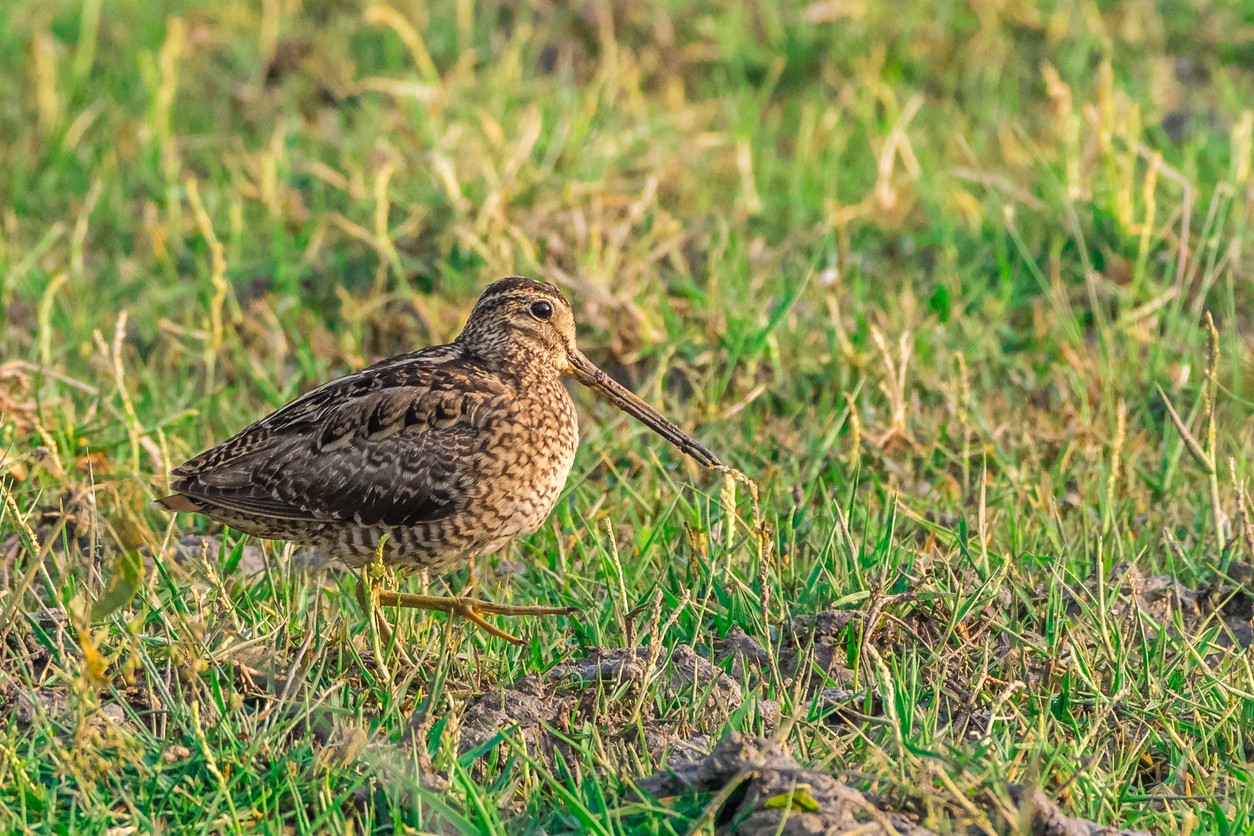Swinhoe's Snipe
A species of Typical Snipes and Woodcock-snipes Scientific name : Gallinago megala Genus : Typical Snipes and Woodcock-snipes
Swinhoe's Snipe, A species of Typical Snipes and Woodcock-snipes
Botanical name: Gallinago megala
Genus: Typical Snipes and Woodcock-snipes
Content
Description General Info

Description
Swinhoe's snipe, Gallinago megala, also known as forest snipe or Chinese snipe, is a medium-sized (length 27–29 cm, wingspan 38–44 cm, weight 120 gm), long-billed, migratory wader. The common name commemorates the British naturalist Robert Swinhoe who first described the species in 1861. 
Size
29 cm
Nest Placement
Ground
Feeding Habits
Swinhoe's Snipe primarily feeds on small invertebrates, such as earthworms, mollusks, and insects, using its specialized bill to probe soft soils and mudflats during foraging.
Habitat
Swinhoe's Snipe breeds in forest glades, meadows, and close to deciduous or mixed open woodland, favoring environmental conditions slightly drier than its relative. During non-breeding seasons, swinhoe's Snipe occupies shallow freshwater wetlands, including marshes, paddy fields, and areas with mud or shallow water. It can also adapt to alpine meadows at high elevations in Northeast Asia.
Dite type
Insectivorous
General Info
Feeding Habits
Bird food type
Distribution Area
It breeds mainly in central and southern Siberia and Mongolia. The entire population migrates and spends the non-breeding season principally in eastern and southern India, Sri Lanka, south-eastern China, South-East Asia and New Guinea. It has been recorded on migration in eastern China and occasionally in Japan. Records in Australia are mainly from the Top End of the Northern Territory and from north-western Western Australia. 
Species Status
Because of wide range and no evidence of significant population decline, the species is assessed as being of least concern. 

